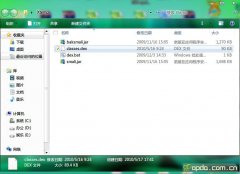Android include标签
android中include标签是为了便于控件的覆用的一个很好解决方案。
但是也有一些需要注意的地方,下面是本人在项目中碰到过的一个问题,做此记录,便于以后查看。
include标签用法。
1.新建一个xml文件,命名 head.xml
head.xml文件内容如下:
<?xml version="1.0" encoding="utf-8"?>
<RelativeLayout xmlns:android="http://schemas.android.com/apk/res/android"
android:id="@+id/index_linear_foot"
android:layout_width="fill_parent"
android:layout_height="wrap_content"
android:orientation="horizontal"
>
<ImageView
android:id="@+id/head_btn_refresh"
android:layout_width="wrap_content"
android:layout_height="wrap_content"
/>
</RelativeLayout>
2.新建一个布局文件,命名 main.xml
main.xml文件内容如下:
<?xml version="1.0" encoding="utf-8"?>
<LinearLayout xmlns:android="http://schemas.android.com/apk/res/android"
android:layout_width="fill_parent"
android:layout_height="fill_parent"
android:orientation="vertical"
>
<include android:layout_width="fill_parent" android:layout_height="wrap_content" layout="@layout/head" />
</LinearLayout>
注意:上面我们的include标签中是没有为它指定id的。
3.新建一个MainActivity,设置布局文件为main.xml;
4.假设我现在需要在代码中为head.xml中的RelativeLayout容器设置背景图片。
代码如下:
//获得布局容器对象
RelativeLayout head = (RelativeLayout)findViewById(R.id.index_linear_foot);
//设置背景图片
head.setBackgroundResource(R.drawable.head);
这样就OK了。
5.刚刚说到,我们的include标签中是没有为它指定id的,假设我们现在的main.xml文件布局容器是RelativeLayout,而我需要把某个控件放在head.xml下面。就需要使用到RelativeLayout布局容器的特有属性 android:layout_below="" 属性。还需要为include指定id属性。
那我们的main.xml文件变成如下:
<?xml version="1.0" encoding="utf-8"?>
<RelativeLayout xmlns:android="http://schemas.android.com/apk/res/android"
android:layout_width="fill_parent"
android:layout_height="fill_parent"
>
<include android:id="@+id/main_head" android:layout_width="fill_parent" android:layout_height="wrap_content" layout="@layout/head" />
相关新闻>>
- 发表评论
-
- 最新评论 进入详细评论页>>





